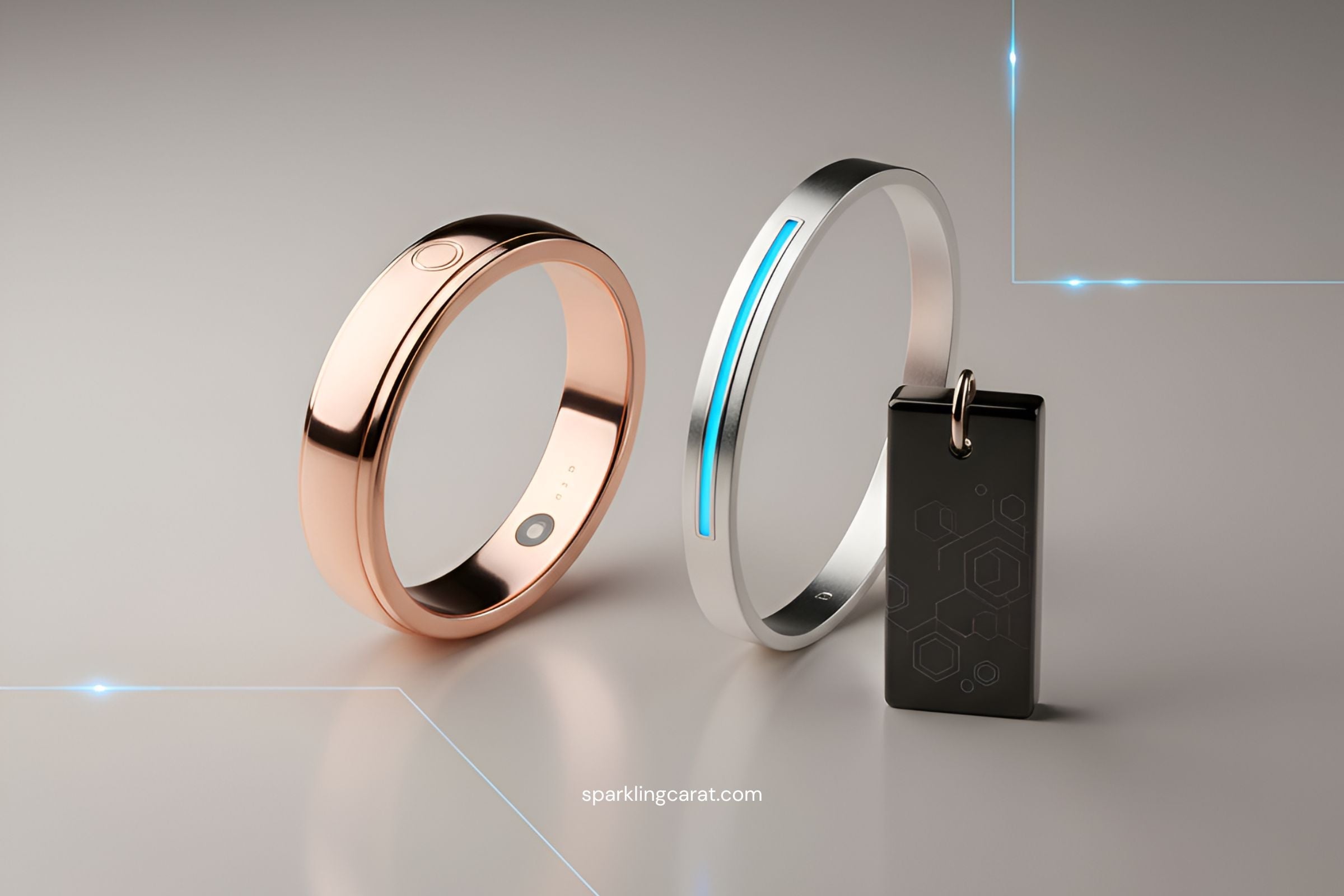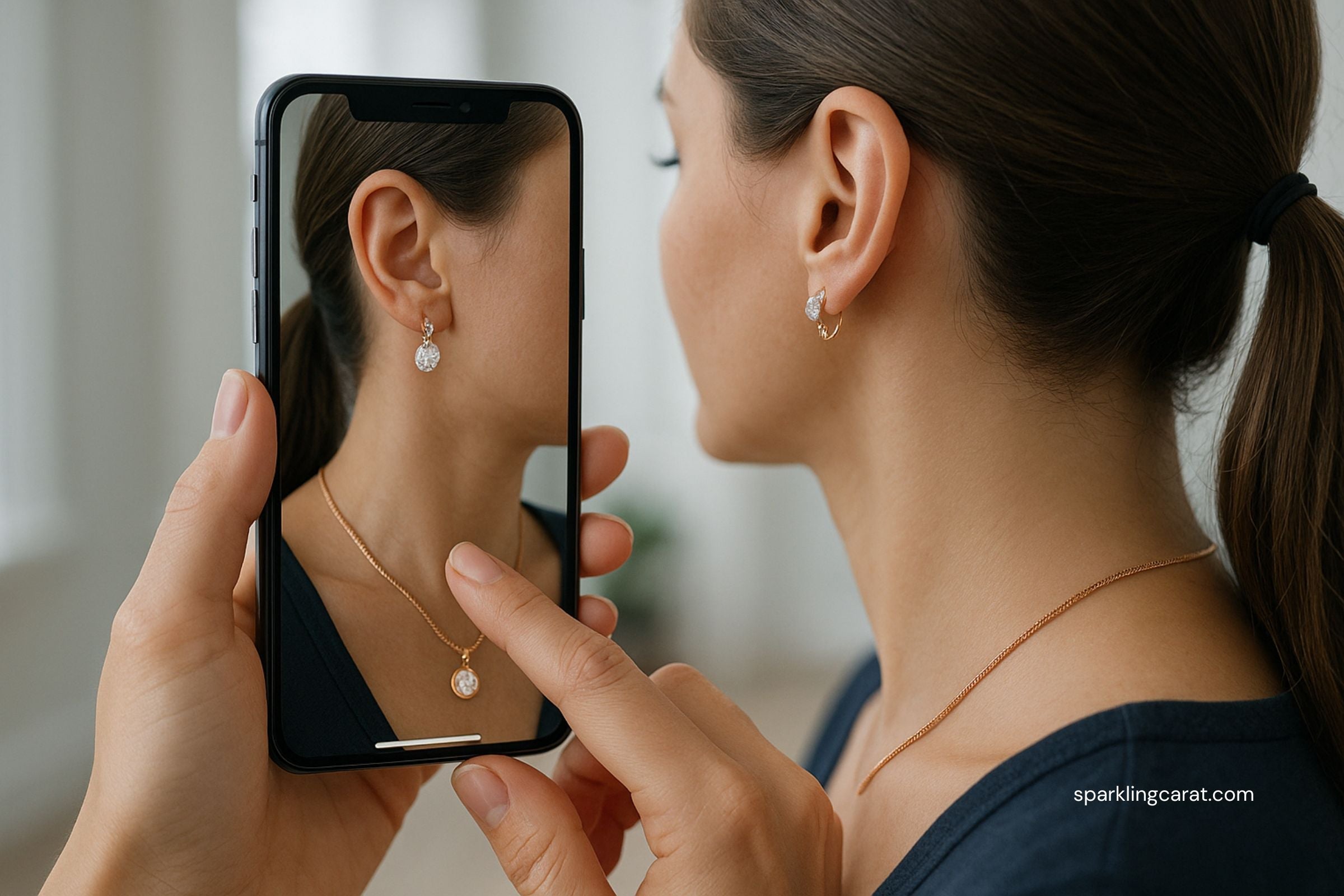Innovative Materials in Jewelry: Bio-Resins, 3D-Printing & Recycled Alloys
The jewelry world has long been associated with precious metals and rare gemstones. But in 2025, innovation is rewriting the rules. Consumers demand not only beauty but also sustainability, individuality, and cutting-edge design. Enter bio-resins, 3D-printing, and recycled alloys, three material revolutions reshaping how jewelry is made, worn, and perceived.
This in-depth guide explores each material, how designers and brands are using them, their environmental and ethical advantages, and how you can incorporate these innovative pieces into your own collection. We’ll also link to related trends, like Sustainable Jewelry Spotlight: Recycled Metals & Fair-Trade Sourcing and Lab-Grown Diamonds Go Mainstream: Ethics Meets Elegance, to show the bigger picture of jewelry’s evolving future.
Why Materials Matter
Traditionally, the value of jewelry was defined by the rarity of gold, silver, or platinum and the quality of gemstones. But today’s buyers, especially Millennials and Gen Z, evaluate jewelry on multiple levels:
-
Environmental footprint
-
Transparency of sourcing
-
Design innovation and personalization
-
Affordability without compromising style
New materials like bio-resins, recycled alloys, and 3D-printed metals enable creative freedom while answering ethical and sustainability concerns. These materials are lighter, sometimes stronger, and often more versatile than traditional options.
Bio-Resins: Nature-Inspired Innovation
What Are Bio-Resins?
Bio-resins are plant-based or biodegradable alternatives to petroleum-based plastics. Derived from renewable sources like corn, algae, or sugarcane, they harden into durable yet lightweight forms ideal for jewelry.
Why They’re Trending:
-
Vibrant colors, translucence, and organic patterns impossible to achieve with metals alone.
-
Ultra-lightweight, making bold earrings and cuffs comfortable to wear.
-
Lower carbon footprint compared to conventional acrylics or plastics.
Design Possibilities:
-
Encapsulating natural elements (dried flowers, pigments, recycled micro-materials) for Nature-Inspired Jewelry: Organic Textures, Leaf Motifs & Earth Tones.
-
Creating sculptural, asymmetrical pieces aligned with Enamel Accents & Bold Colors: 2025 Jewelry Statements You Can’t Miss.
Brands to Watch:
Independent designers on Etsy and forward-thinking labels like Monocirc or Emily Cobb are experimenting with bio-resins.
3D-Printing: Freedom & Precision
How It Works:
Additive manufacturing builds up jewelry layer by layer from digital files. Designers can prototype complex shapes that would be impossible or prohibitively expensive with traditional casting.
Benefits:
-
Customization: Bespoke rings, pendants, and earrings tailored to exact measurements.
-
Reduced Waste: Only the material needed is used, reducing scrap metal.
-
Rapid Prototyping: From concept to finished piece in days instead of weeks.
-
Hybrid Designs: Combine 3D-printed frameworks with traditional stones or Lab-Grown Diamonds Go Mainstream: Ethics Meets Elegance.
Materials Used:
-
Precious metals (gold, silver, platinum powders sintered together).
-
High-strength polymers and bio-resins for statement pieces.
-
Even recycled alloys can be fed into 3D-printing processes.
Design Aesthetic:
Intricate latticework, organic curves, and lightweight but bold silhouettes, perfect for Statement Jewelry in 2025: Oversized Earrings and Sculptural Rings to Watch.
Recycled Alloys: Closing the Loop
What Are Recycled Alloys?
These are metals sourced from post-consumer jewelry, industrial scrap, or electronic waste, refined to jewelry-grade standards. Popular examples: recycled gold, silver, titanium, and new alloy blends.
Why They Matter:
-
Mining precious metals has huge environmental and social costs.
-
Recycled alloys drastically cut emissions and water usage.
-
Certification programs (like SCS Global Services or Fairmined) verify sustainability claims.
Design Opportunities:
-
Mixed-metal looks (link to Mixed Metal Magic: How 2025 Is Breaking Jewelry Rules).
-
Pairing recycled alloys with lab-grown gems for fully ethical pieces.
-
Price stability, recycled metals can be more affordable than newly mined equivalents.
Styling Innovative Materials
For Everyday:
Lightweight bio-resin hoops paired with recycled silver studs for subtle sustainability.
For Evening:
3D-printed sculptural cuffs in gold alloy make bold statements.
Layering:
Mix bio-resin pendants with Chunky Gold Chains: A Modern Reinvention of ’80s Glamour for a fresh take.
Care Tips:
-
Store in cool, dry places (see Eco-Friendly Jewelry Storage & Display Tips).
-
Avoid harsh chemicals, especially for bio-resins.
-
Follow manufacturer’s cleaning guidelines for 3D-printed metals.
Sustainability Beyond Materials
Innovative materials often come with innovative business models:
-
Take-Back & Recycling Programs: Many brands accept old pieces for recycling.
-
Local Production: 3D-printing allows small-batch manufacturing close to customers, cutting shipping emissions.
-
Transparent Supply Chains: QR codes on packaging show material origins.
These practices reinforce consumer trust and align with broader movements like Sustainable Jewelry Spotlight: Recycled Metals & Fair-Trade Sourcing.
The Future of Jewelry Materials
Expect to see advances in lab-grown gemstones combined with 3D-printed recycled alloys, self-healing bio-resins, and even smart materials that change color or texture. As sustainability and personalization converge, materials will be as much a part of the storytelling as design itself.
Conclusion
Bio-resins, 3D-printing, and recycled alloys are transforming jewelry from a tradition-bound craft into a high-tech, eco-conscious art form. Whether you’re a designer, retailer, or consumer, understanding these materials helps you make choices that are innovative, ethical, and uniquely yours. This isn’t just a trend, it’s the future of adornment.






Leave a comment
This site is protected by hCaptcha and the hCaptcha Privacy Policy and Terms of Service apply.